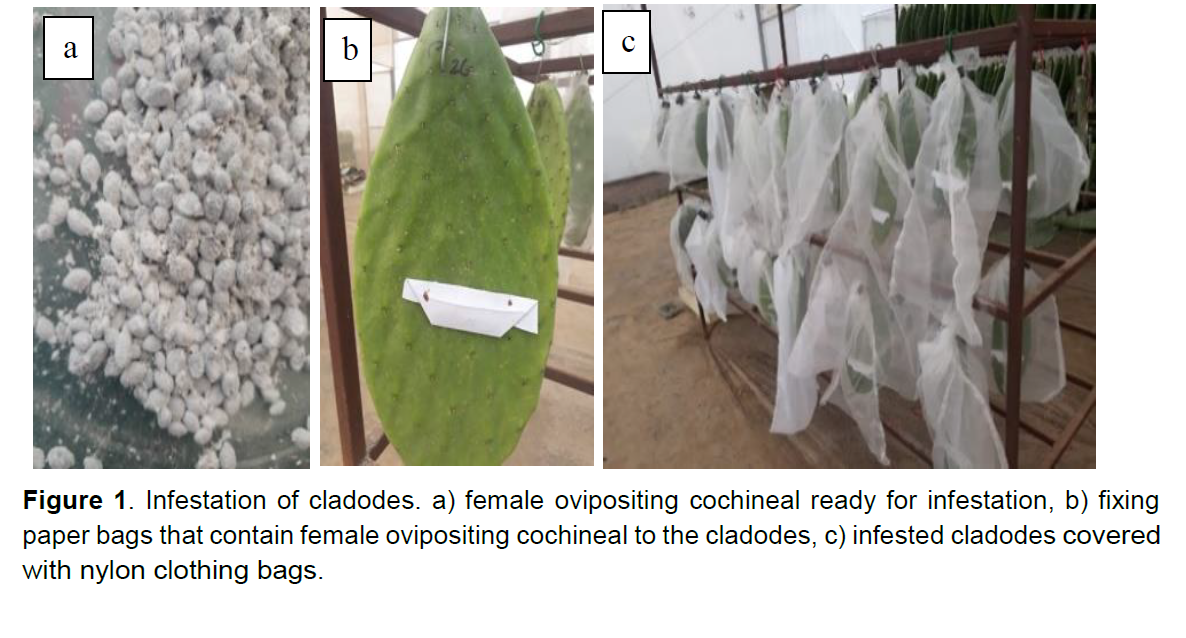Resistance of Opuntia ficus-indica cv ‘Rojo Pelon’ to Dactylopius coccus (Hemiptera: Dactylopiidae) under greenhouse condition
DOI:
https://doi.org/10.56890/jpacd.v24i.509Keywords:
beles, cactus pear, cochineal, resistan cultivarAbstract
Opuntia ficus-indica (L.) Mill.), is called "beles" in the Tigray region of Ethiopia, where it is used for multiple purposes, such as food, fodder, and fences; however, in recent years the introduction of the cochineal (Dactylopius coccus Costa) to this region has caused it to become a plague that has affected thousands of hectares, causing an economic and social problem. Six cultivars: three from Opuntia ficus-indica (‘Atlixco’, ‘Chicomostoc’, and ‘Rojo Pelón’) and three others O. cochenillifera (‘Nopalea’ and ‘Bioplástico’) and O. robusta (‘Robusta’) were tested for resistance to D. coccus in completely randomized design (CRD) experiment with six replications under greenhouse conditions, for two seasons (cycles). Matured cladodes were infested by attaching a paper bag with ten ovipositing female D. coccus. The number of insects at different stages and yields were recorded, log transformed (insect count data), and subjected to statistical analysis. The number of nymphs (stages I and II) was significantly different in both cycles (P=0.0000). The insects died at the nymph I stage at ‘Rojo Pelón’ and ‘Robusta’, in contrast, they completed their life cycle at ‘Atlixco’, ‘Chicomostoc’, and ‘Nopalea’ cultivars. Insects at ‘Bioplástico’ cultivar remained in the nymph I stage the whole experimental period; the molting was hampered. Although some crawlers started settling (nymph I) at ‘Rojo Pelón’, they couldn’t survive and developed, and this confirms that this O. ficus-indica cultivar is resistant to D. coccus.
Publication Facts
Reviewer profiles N/A
Author statements
Indexed in
- Academic society
- Journal of the Professional Association for Cactus Development
- Publisher
- Professional Association for Cactus Development




